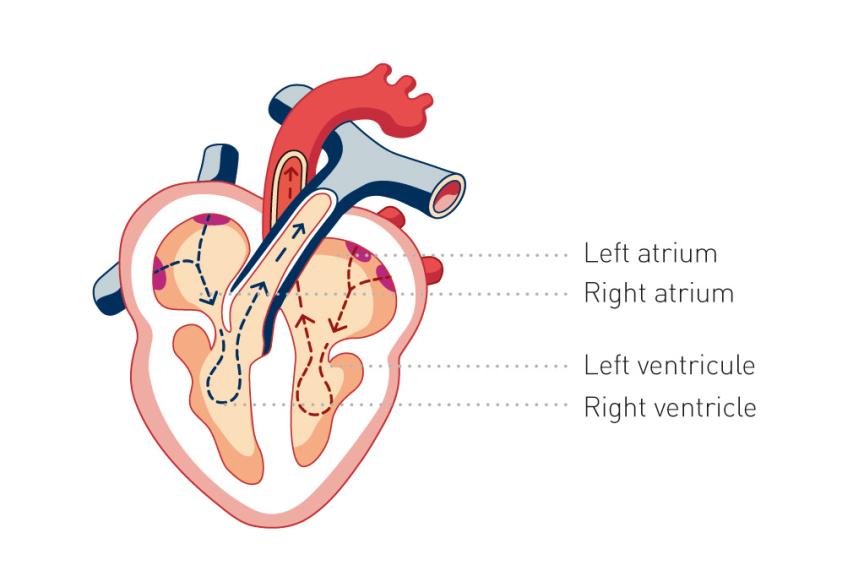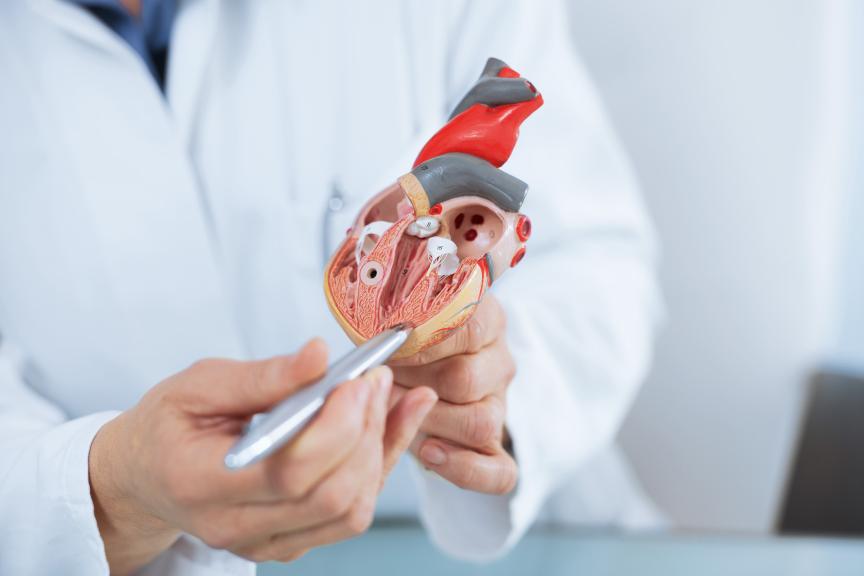What Is the Heart?
The heart is a fist-sized muscle that weighs roughly 300 grams (10.5 ounces). It is located in the center of the chest, slightly to the left, protected by the breastbone (sternum) and ribs. In the span of one minute, the heart pumps all our blood through the entire body with rhythmic contractions. Over one’s lifetime, the heart beats three billion times and transports 250 million liters of blood – an astonishing performance that no other engine can compete with.
The Structure of the Heart
The heart has two halves that beat in the same rhythm. Each half is divided into an upper chamber (the atria) and a lower chamber (the ventricle). These sides supply two different circulatory systems. The right side carries blood that is low in oxygen from the body to the right atrium and into the lungs. There, the blood exchanges oxygen for carbon dioxide. The left side of the heart transports oxygenated blood from the lungs into the left atrium and the rest of the body, including the head, arms and legs and other organs. Valves that open and close the heart’s chambers regulate blood flow.
The heart’s halves differ in size because they support separate circulatory systems. The left half is bigger and surrounded by a strong layer of muscle because it works harder pumping oxygenated blood throughout the body.

The Sinus Node and the Heartbeat
There are two sounds that make up the heartbeat. One sound – the systole phase – is the heart chambers contracting and pumping blood into both circulatory systems. This lasts about one-third of a second. The second sound – the diastole phase – is the atria contracting when the lower heart chambers are empty. It lasts approximately two-thirds of a second. When the atria are full, the ventricles are empty, and vice versa.
The sinus node is the natural pacemaker of the heart and “tells” the heart when to contract. It is located in the right atrium and is made up of special cardiac muscle. It starts the contractions as it automatically produces cyclical electrical activity. From there, the impulse travels into the chambers. These electrical currents can be seen with an electrocardiogram (ECG or EKG).

